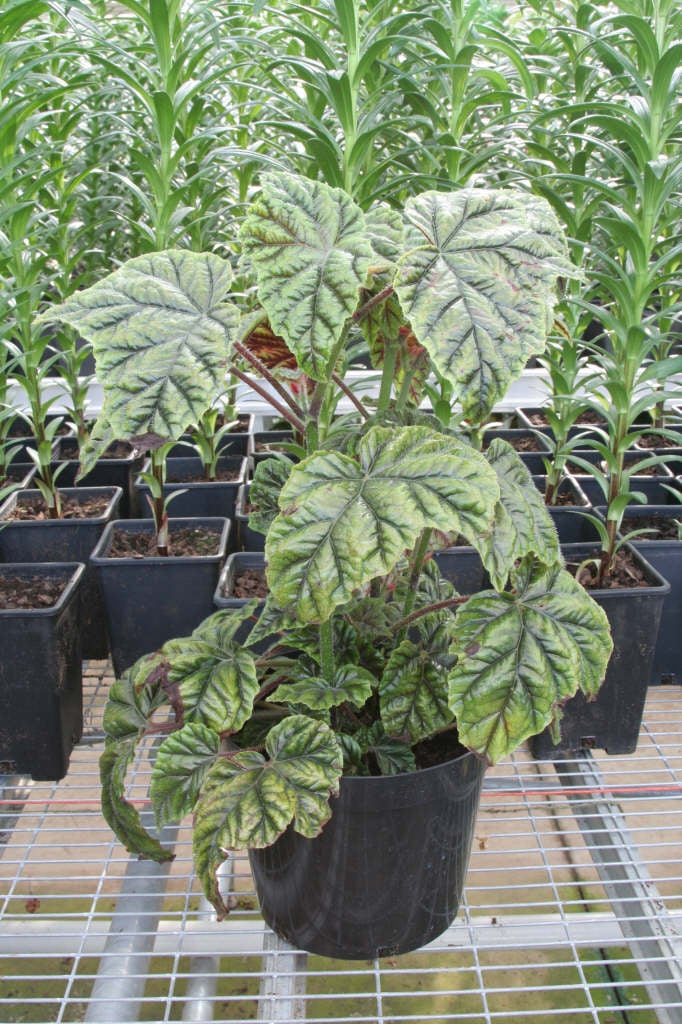Begonia metallica
metal-leaf begonia
A bushy evergreen perennial to 1m in height, with large ovate lobed dark metallic-green leaves, red on veins and lower surface. Small hairy pale pink flowers

Buy this plant
Size
Ultimate height
0.5–1 metresTime to ultimate height
2–5 yearsUltimate spread
0.1–0.5 metresGrowing conditions
Moisture
Moist but well–drained, Well–drainedpH
Acid, NeutralColour & scent
| Stem | Flower | Foliage | Fruit | |
| Spring | Green Red | |||
|---|---|---|---|---|
| Summer | Green Red | |||
| Autumn | Pink | Green Red | ||
| Winter | Green Red |
Position
- Partial shade
Aspect
South–facing or East–facing
Exposure
Sheltered Hardiness
H1BBotanical details
- Family
- Begoniaceae
- Native to GB / Ireland
- No
- Foliage
- Evergreen
- Habit
- Bushy
- Potentially harmful
- Ornamental bulbs - not to be eaten. Wear gloves and other protective equipment when handling. Pets: Ornamental bulbs - not to be eaten - see the HTA guide to potentially harmful plants for further information and useful contact numbers
- Genus
Begonia can be annuals, evergreen or deciduous perennials or shrubs, with fibrous, tuberous or rhizomatous roots and usually asymmetrical leaves, often strikingly patterned, and small or large flowers, both male and female in the same cluster
- Name status
Correct
- Plant range
- C & S America
How to grow
Cultivation
Under glass grow in light, well-drained, peat-free potting compost in bright filtered light with shade from hot sun at a minimum of 17°C. Water moderately when in growth and apply a balanced liquid fertiliser at alternative waterings. To encourage compact growth, pinch out the growing tips twice during the growing season. See Begonias: houseplants for further advice.
Propagation
Propagate by seed, leaf cuttings or softwood cuttings
Suggested planting locations and garden types
- Patio and container plants
Pruning
No pruning required
Pests
May be susceptible to caterpillars, mealy bugs, mites, glasshouse thrips, vine weevil and aphids
Diseases
May be susceptible to grey moulds, powdery mildews, stem rot and rhizome rot
Get involved
The Royal Horticultural Society is the UK’s leading gardening charity. We aim to enrich everyone’s life through plants, and make the UK a greener and more beautiful place.